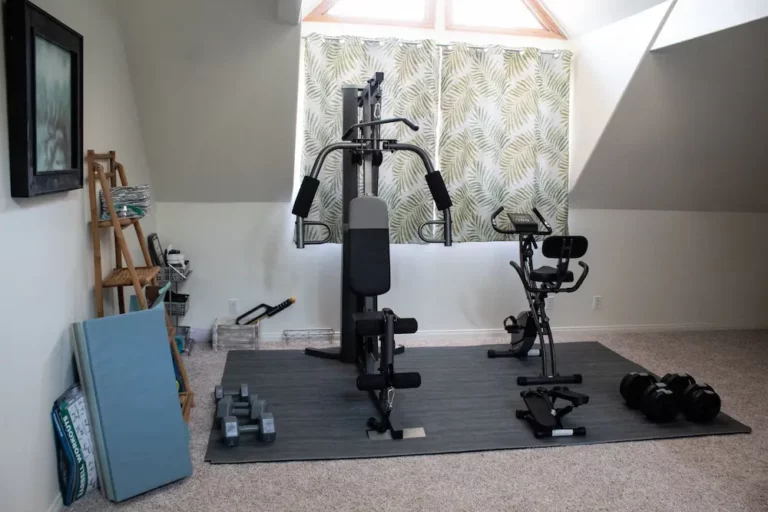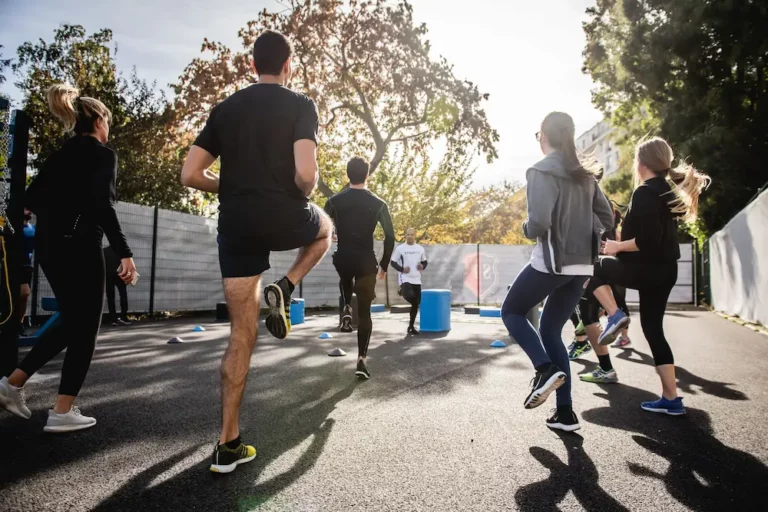Boosting Workout Motivation During Depression: Simple Steps
I’ve been there, staring at my sneakers, knowing I should lace up and get moving but feeling like I’m anchored to the spot by my own mind. It’s tough, right? Depression has this way of magnifying procrastination, turning “I’ll do it later” into “Why bother?” But I’ve learned something crucial: the right push can break through that barrier.
Every time I’ve managed to get up and move, it’s felt like a small victory. Not just because of the endorphins but because I proved to myself I could do it, even when it felt impossible. That memory of feeling better post-workout? It’s a beacon in the fog, a reminder that the effort is worth it. Let’s talk about how to find that motivation, even when depression makes you feel stuck.
Understanding the Challenge
Recognizing the Impact of Depression on Motivation
It’s no secret that depression has a profound impact on motivation. For me, there were days when even the simplest tasks felt like climbing Mount Everest. This lack of motivation isn’t just about feeling “lazy”; it’s a debilitating aspect of depression that makes starting anything new, especially something as active as a workout routine, seem impossible. I’ve learned that depression skews perception, making it difficult to see the benefits of exercise beyond the immediate hurdle of getting started.
Research shows that the brain’s chemistry changes with depression, affecting our motivation levels. Endorphins, those feel-good chemicals that are usually released during exercise, become harder to come by. This means that even if I know on some level that exercise will make me feel better, depression casts a shadow of doubt that’s hard to shake off. It’s a vicious cycle: I know exercise might boost my mood, but the motivation to start is stifled by the very feelings I hope to alleviate.
Acknowledging the Difficulty in Starting a Workout Routine
Starting an exercise routine while depressed is like trying to push a boulder uphill. The mere thought of planning a workout, let alone executing one, can feel overwhelming. For me, task initiation was the biggest hurdle. I had to accept that my “depressed, sluggish self” needed every advantage to just get moving. This meant setting up my environment to make the beginning as easy as possible. I’d wear my running attire to bed so that all I needed to do the next morning was step outside.
The simplicity of this approach might sound trivial to someone who’s never experienced severe depression, but it was a game-changer for me. It removed the mental barrier of having to get ready, which on bad days could feel insurmountable. Even then, understanding the depth of the challenge meant acknowledging that some days, success was just putting on my shoes, even if I didn’t make it out the door.
Tiny steps are paramount. Whether it’s a 20-minute jog or a gentle yoga session at home, starting small can help dismantle the immense pressure that depression places on the act of beginning a workout. Personal anecdotes and stories I’ve come across emphasize time and again that the smallest step forward is a victory in itself.
The Benefits of Exercise for Mental Health
Physical and Mental Health Improvements
I’ve come to understand that the connection between the body and the mind is more intricately linked than I ever thought possible. Regular physical activity not only sculpts my body but also profoundly impacts my mental health. It’s fascinating to learn that engaging in exercise can lead to Restorative Sleep, Enhanced Creativity, and even Sharper Memory. I find myself feeling more relaxed throughout the day, better equipped to handle stress, and overall, enjoying a significant boost in energy levels. The realization that exercise could do so much more than just improve my physical appearance was a game-changer for me. It’s liberating to know that by taking care of my body, I’m also nurturing my mind, paving the way for a healthier, more vibrant version of myself.
Exercise as a Natural Antidepressant: Endorphins and Neural Growth
The term “runner’s high” isn’t just a myth; it’s a real, tangible feeling empowered by the release of endorphins during exercise. I’ve experienced firsthand the wave of Happiness and Well-being that floods my body after a good workout session. These Endorphins are powerful chemicals that act as my body’s natural antidepressants. But it doesn’t stop there. Continuous physical activity promotes Neural Growth, diminishes Inflammation, and offers a much-needed distraction from the overpowering cycle of negative thoughts. I am genuinely amazed at how exercising transforms not just the body but the brain as well, reinforcing its structure and function to better combat the claws of depression.
Long-term Effects on Depression and Anxiety
Living with depression or anxiety is akin to carrying a weight that you can’t easily shed. However, integrating exercise into my daily routine serves as a critical anchor, offering light in what sometimes feels like endless darkness. The long-term effects of regular physical activity on my mental health are undeniable. Studies have illuminated how sustained exercise not only alleviates symptoms of depression and anxiety but also boosts Well-being, Personal Accomplishment and reduces Psychological Distress. These findings are a beacon of hope, reminding me that with every step, sprint, or stretch, I’m actively contributing to my mental health, fortifying my defenses against depression and anxiety. It’s empowering to acknowledge that each workout is a step towards a happier, healthier me, free from the confines of my mental health struggles.
Setting Realistic Goals
When I’m in the grips of a depressive episode, grand plans and lofty goals feel not just unattainable but downright alien. I’ve found that the more realistic and grounded my goals are, the more motivated and less overwhelmed I feel. Let’s break down how to set realistic goals for working out, especially when the weight of depression makes starting seem impossible.
Starting with Small, Achievable Objectives
The first step in my journey always begins with setting small, achievable objectives. This might seem counterintuitive. After all, don’t we often hear about dreaming big? But here’s the thing: when I’m depressed, even small tasks can seem Herculean, so dreaming big can sometimes set me up for disappointment. Instead, I focus on what I know I can manage. Maybe that’s doing five minutes of stretching in the morning or taking a brief walk around the block. It’s about giving myself permission to start small without feeling guilty. This approach has never failed to help build my confidence gradually, step by step.
Tracking Progress and Celebrating Small Wins
I’ve experienced firsthand that depression can throw a veil over any sense of accomplishment, no matter how significant it may be. That’s why tracking progress and celebrating small wins has been a game-changer for me. Each time I mark off a day I completed my small workout goal, I’m reminded that progress, not perfection, is what matters. These small celebrations can be as simple as a mental pat on the back or treating myself to a favorite snack. It’s the acknowledgment that keeps the positive momentum going, making each step forward feel like a victory.
Adapting Goals to Energy Levels and Mood
One thing I’ve learned is that my energy levels and mood can fluctuate wildly during depressive episodes. There are days when I feel more capable, and others when getting out of bed is a triumph. I’ve found it crucial to adapt my workout goals to how I’m feeling on a given day. This flexibility means that if I’m having a particularly rough day, I might scale back my exercise to something more gentle, like yoga or a short walk. On better days, I might challenge myself a bit more. This approach helps me stay consistent without pushing myself into burnout or frustration, and it’s been invaluable in maintaining a more compassionate and understanding relationship with myself throughout my fitness journey.
Finding Your ‘Why’
Identifying Personal Reasons for Exercising
When I first recognized the need to incorporate exercise into my routine, especially during periods of depression, I realized I had to dig deep and pinpoint my personal reasons for wanting to stay active. It wasn’t enough to exercise because someone said it would be good for me or because I saw friends posting their workout achievements online. I needed to find a reason that resonated with me on a personal level.
For me, my ‘why’ boiled down to seeking mental clarity and a stronger sense of self-esteem. I began to view exercise as a form of self-care, a way to prove to myself that I could overcome challenges, even if it was just the challenge of getting out of bed to go for a short walk. Identifying these personal reasons became the bedrock of my motivation on days when depression made it hard to see the point in anything.
The Role of Emotional Investment in Sustaining Motivation
Emotional investment in the outcomes of exercising plays a crucial role in maintaining motivation over the long haul. Once I identified my personal reasons for staying active, I found it essential to connect to those reasons emotionally. It was the difference between knowing I should exercise for better health and feeling the joy and pride of meeting my goals.
This emotional connection didn’t happen overnight. I started by setting small, achievable goals and celebrating each success, no matter how minor it seemed. Every time I completed a workout, I’d take a moment to really soak in the positive feelings that accompanied that achievement. Feeling those emotions helped to reinforce my motivation and made me more resilient on days when depression tried to convince me it wasn’t worth the effort.
Strategies to Overcome Low Motivation
Depression has a way of making even the smallest tasks seem insurmountable. Recognizing this, I’ve learned that there are various strategies we can employ to gently push ourselves towards more activity, even when we’re feeling low. Below, I’ll share a few techniques that have helped me overcome that lack of motivation to work out, which I hope can serve you as well.
Behavioral Activation: Acting Against Depressive Tendencies
One thing I’ve found incredibly helpful is the concept of behavioral activation. It’s a fancy term for something quite simple: doing the opposite of what your depressive tendencies want you to do. When depression pulls me towards isolation and inactivity, I push back by setting small, achievable goals. For instance, if I can’t muster the energy for a gym session, I’ll commit to a five-minute walk. Often, those first few steps are the hardest, but by acting against my depressive instincts, I start to break the cycle of inactivity and negativity. It’s a powerful tool in regaining control over my mental health.
The Importance of Routine and Consistency
Establishing a routine is another cornerstone in my fight against depression-induced lethargy. I aim for consistency, not perfection. If I plan to exercise on Monday, Wednesday, and Friday but miss a day, I don’t beat myself up. Instead, I adjust and perhaps do a lighter workout on Saturday. This flexibility helps me stay committed to my routine without the added pressure of needing to be perfect. Consistency in exercising, even in small doses, builds a foundation that sustains motivation and fosters a sense of achievement.
Rewarding Yourself for Every Step Forward
I’ve also learned the importance of rewarding myself for each step forward, no matter how small. When I complete a workout, I celebrate in some way. This could be as simple as marking it off on my calendar, enjoying a favorite treat, or setting aside time for a hobby I love. These rewards reinforce positive behavior, making it more likely that I’ll repeat the action. It’s a reminder that progress, not perfection, is what matters, and every step in the right direction deserves recognition.
By integrating these strategies into my life, I’ve found progress on those days when motivation seems out of reach. Each step forward, no matter how small, is a victory in its own right.
Incorporating Exercise into Daily Life
Choosing Activities That You Enjoy
When I’m feeling low, the last thing I want to do is something that feels like a chore. That’s why picking activities that actually bring me joy is crucial. Whether it’s dancing around my living room, taking a brisk walk in the park, or practicing yoga, I make sure it’s something that sparks a bit of happiness in me. I’ve learned that when I enjoy what I’m doing, it doesn’t feel like exercise at all. It becomes a much-needed break from the monotony or the overwhelming thoughts, and before I know it, I’ve moved my body in ways that are uplifting and healing.
Integrating Physical Activity into Everyday Tasks
One of the simplest ways I’ve found to squeeze in some activity is by making it a part of my daily routine. Who knew household chores could double as a workout session? Vacuuming, gardening, or even cooking can get me moving. I also make it a point to take the stairs whenever possible and park my car a bit further from the entrance of stores. It’s amazing how these small changes can add up throughout the day. And when I’m on the phone, I try to walk around instead of sitting. These bits of movement not only help in keeping me active but also boost my mood, making the day seem a bit brighter.
Using Music and Other Stimuli to Encourage Movement
I can’t overstate the power of a good playlist. Music has the magical ability to lift my spirits and get me moving even on the toughest days. I’ve created several playlists that are my go-to whenever I need that extra push to start moving. It’s not just music, though; podcasts or audiobooks are also great companions for a walk or workout. They keep my mind engaged and make the time fly by. Occasionally, I’ll treat myself to an episode of my favorite show, but only if I’m on the treadmill. It’s a little reward system that motivates me to get moving, and honestly, it works wonders.
Seeking Support and Accountability
The Role of Workout Buddies and Support Groups
I’ve found that one of the most impactful ways to keep myself motivated for workouts, especially on my down days, is to lean on the support of workout buddies and support groups. Having someone to share the journey with makes a world of difference. It’s not just about having company during workouts; it’s about building a connection with someone who understands the struggles and triumphs of staying active amidst depression. Whether it’s a close friend or a family member, committing to someone else not only keeps me accountable but also adds a layer of enjoyment to the process.
Online support groups and community clubs have been a game-changer for me. By joining these groups, I’ve tapped into a wealth of motivation and encouragement that’s hard to find elsewhere. These platforms offer healthy competition and accountability, making it easier to stick to my fitness goals. It’s comforting to know there are others out there who share my struggles and are rooting for me to succeed.
Professional Guidance: Therapists and Trainers
Engaging with professionals like therapists and personal trainers has been another key element in my journey. Therapists, especially those proficient in cognitive-behavioral techniques, have helped me tackle the negative internal dialogue that often keeps me from working out. They’ve equipped me with strategies to reframe my challenges, boosting my emotional resilience and enabling me to look at exercise as an attainable goal rather than an insurmountable hurdle.
Consulting a fitness trainer has also been critical. Knowledgeable trainers have helped me start and maintain an exercise program that’s tailored to my interests and current mental state, which makes all the difference. They prioritize gradual progression and ensure the routine fits seamlessly into my day, making the thought of exercising less daunting. The structured accountability from a trainer keeps me on track, reinforcing the habit of regular physical activity as a cornerstone of my mental health management strategy.
Incorporating both support systems and professional guidance has provided a dual layer of accountability that’s vital for anyone struggling with depression. It’s about creating a network of support that uplifts, motivates, and pushes me forward, even on the days when I feel like taking a step back.
Emphasizing the Journey Over the Destination
I’ve shared some ways to make working out a bit easier when you’re feeling low. Remember, it’s all about the journey rather than the destination. It’s okay to have off days, and it’s important to celebrate every step forward, no matter how small. By being kind to yourself and recognizing your efforts, you’ll find that integrating exercise into your life—even when battling depression—becomes a bit more manageable. Let’s not forget that it’s about doing something, anything, rather than nothing at all. Here’s to taking those steps, embracing the journey, and finding strength in the struggle.
FAQ – Frequently Asked Questions
How do I manage expectations about exercising when depressed?
Be kind to yourself and set realistic expectations. It’s okay if you can’t do as much as you normally would. Acknowledge your effort, no matter how small.
Can a change in environment boost my motivation to exercise?
Yes, a change of scenery can be refreshing. Try exercising outdoors, like a park or a trail, or change your indoor workout space for a new perspective.







